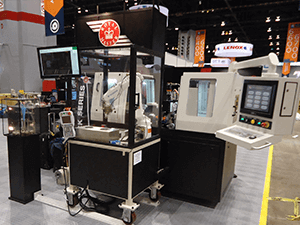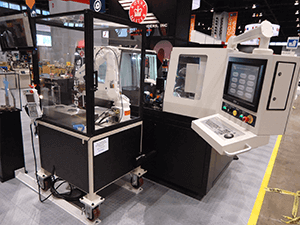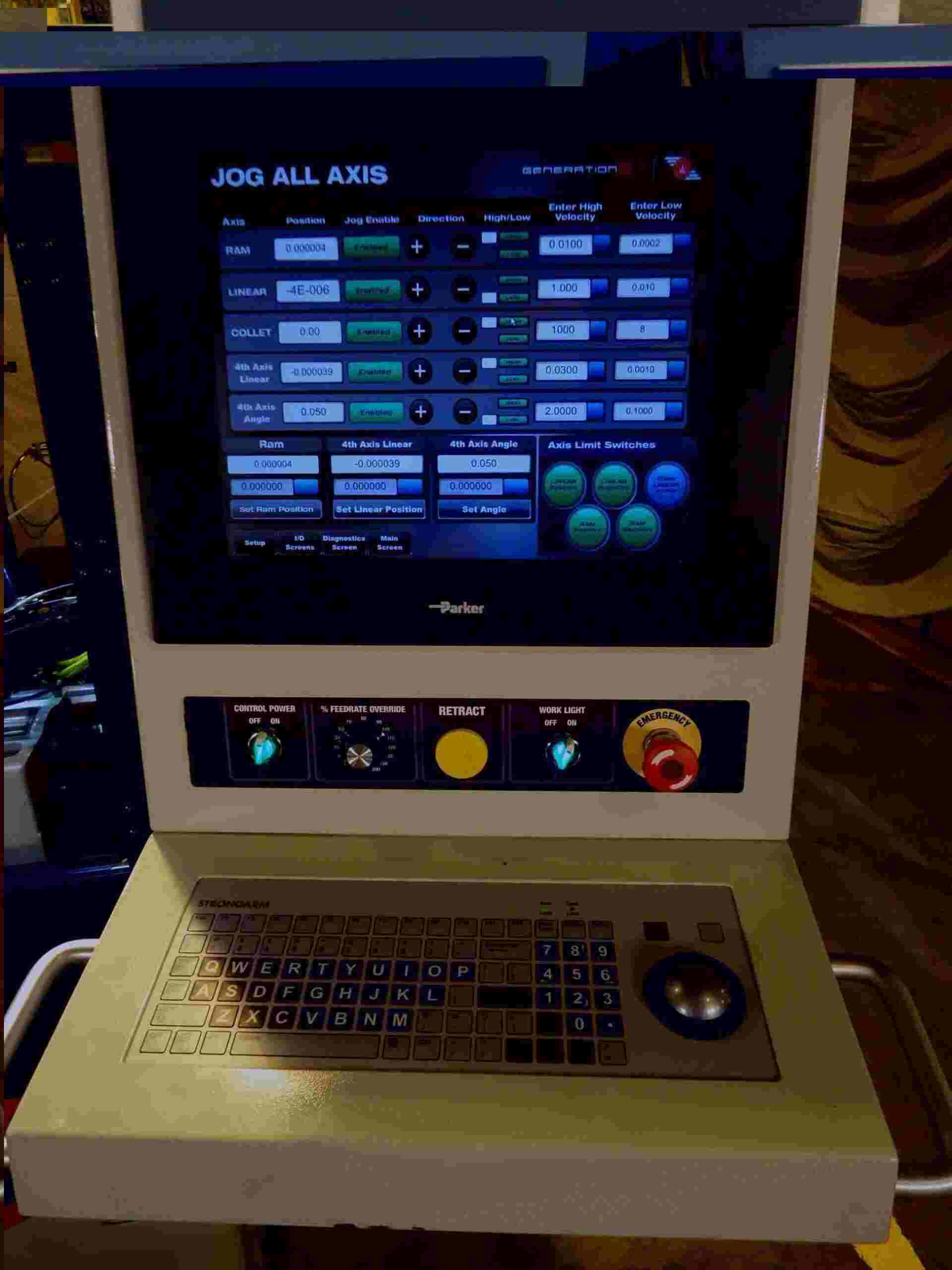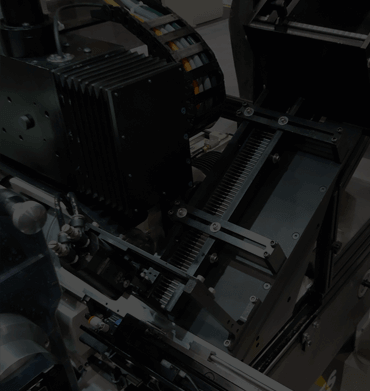Supporting Our Customers Is A Key Priority.
APPLICATION
Fluid Dispensing Nozzle Project With Full Automatic Loading, Unloading and Keyence Gauging
CHALLENGE
Infeed grind headed pin using robot load and unload.
Solution Delivered
 The customer had been grinding the parts in multiple operations or with outside vendors and struggling to deliver quality parts within a controlled cost. The part volume was medium and changeovers from one part to another of the 20 in the family needed to be reasonable.
The customer had been grinding the parts in multiple operations or with outside vendors and struggling to deliver quality parts within a controlled cost. The part volume was medium and changeovers from one part to another of the 20 in the family needed to be reasonable.
Other processes within the factory used an array of parts in a tray, holding the headed part vertically. We studied this and were able to match the tray arrangement for a total of 3 different trays. This modification of tray design became universal to the other processes within the factory and became a major cost savings for other processes and material handling. A robot with gripper finger tips was able to retrieve an unground part from the tray and load the part between the wheels of the Royal Master centerless grinder. The robot gripper finger tips were able to then retrieve the fresh ground part and deliver the part back to a second tray for unloading. This load and unload time were within the grind cycle time and provided a very efficient automated load, grind and unload.
The grind profile of each of the 20 different parts were unique but could be grouped into shape families. This allowed Royal Master Design Engineers to group parts and share work rest blades and grinding wheels. The machine, Model TG-12x4, had CNC Wheel Dressing on both the Work and Regulating Wheels. Minor profile dress differences between similar profiled parts reduced the number of pre-mounted wheels and reduced the amount of time spent dressing the wheels. Changeover time was minimized. These CNC Dress profiles were stored in the machine control and easily retrieved on demand. Tooling inventory cost was virtually eliminated.
 The BEDROCK machine had High Accuracy Ram Bed Position Control. Infeed Grind Parameters are stored under the part number name and retrieved instantly as part of the changeover. The tolerance qualities of diameter size, roundness and surface finish were controlled.
The BEDROCK machine had High Accuracy Ram Bed Position Control. Infeed Grind Parameters are stored under the part number name and retrieved instantly as part of the changeover. The tolerance qualities of diameter size, roundness and surface finish were controlled.
The tolerance features were maintained with the support of a post process part wash, dry and digital optical inspection by KEYENCE. This inspection was integrated within the robot table. The gauge interval could be 100% or on a part counter set point. Once the part counter reaches the set point, the grinder is paused, the part is measured, and the evaluation determines if the part is within control tolerance or not. When needed, an auto size compensation is sent to the grinder machine control.
The automatic robot load, the automatic infeed grind and the automatic gauge made for a completely unattended grinding system. Changeover was made by drop down menu selection for the robot, the dressers, the grinder and the gauge program selections. This simplified and minimized time of changeover.
The project was a complete success. The customer was able to bring the grind process in-house and deliver better product at a lower cost.









